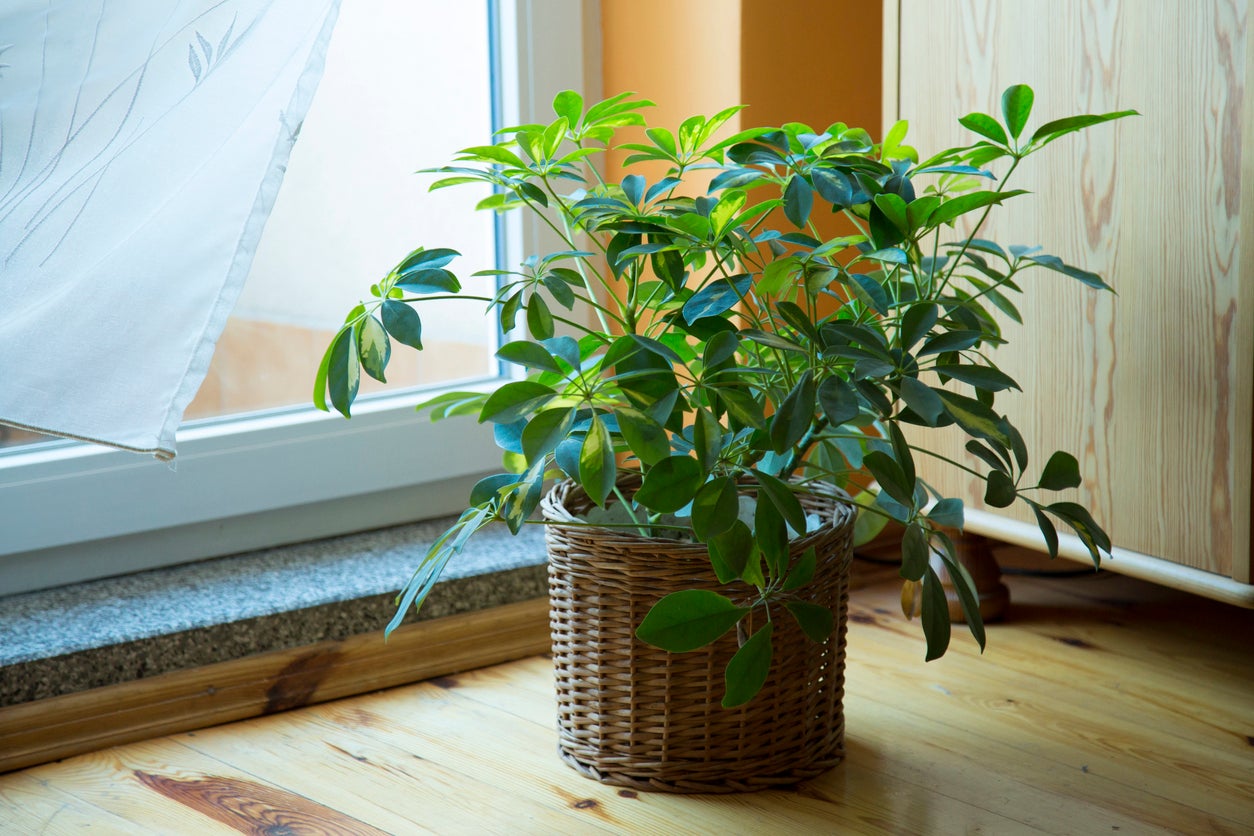Schefflera Repotting: Transplanting A Potted Schefflera Plant


It is very common to see Schefflera in offices, homes, and other interior settings. These beautiful houseplants are long lived tropical specimens that are easy to grow and low maintenance. Repotting a Schefflera should be done when the container is crowded. In the wild, in-ground plants can reach 8 feet (2 m.) in height but you can easily keep it smaller by tip pruning. Transplanting a potted Schefflera will encourage new growth and keep the root system happy.
Tips on Schefflera Transplant
The two main reasons to replant any plant are to grow it larger and to replace depleted soil. Schefflera repotting may see it moved to a larger container to grow it bigger or into the same pot with fresh soil and a gentle root trim. Either should be done in spring, according to houseplant experts.
There are several things to consider when repotting a Schefflera. How big it will get and how heavy the pot will be are major issues. If you don't want to lift a heavy pot or don't have space for a monster plant, it is best to keep the plant in the same sized container. Make sure that the container has drainage holes and can evaporate excess moisture, a common plant complaint.
It is important to give plants new soil every few years, as they deplete it of nutrients. Even plants that will stay in the same container can benefit from brand new potting soil and some fluffing of the roots.
How to Repot a Schefflera
Once you have selected an appropriate container, remove the plant from its housing. Often, what you will note is extremely overgrown roots, sometimes wrapping around the entire root ball. This takes some gentle finesse to untangle. Soaking the entire root ball in a bucket of water first can help untangle the mess.
It is okay to prune the roots and, in some cases, entirely necessary to fit them back into an original pot. Ideally, the roots should be able to spread out and new feeder roots will quickly grow back.
Use a good potting mix or make your own with 1 part garden soil and 1 part moistened sphagnum moss and a little sand if the mixture is too dense.
Sign up for the Gardening Know How newsletter today and receive a free copy of our e-book "How to Grow Delicious Tomatoes".
Aftercare for a Schefflera Transplant
Schefflera repotting can be hard on a plant. It will need some time to recover from the transplant shock that occurs after the roots are disturbed.
Keep the soil lightly moist and do not move the plant for several weeks. Additionally, don't fertilize for the same period, except with a well diluted transplant fertilizer. Once the plant has established and seems to be doing well, resume your watering and feeding schedule.
Transplanting a Schefflera isn't difficult, but if you have not planted it at the right depth or have covered the stems with soil, you could have problems. Luckily, these are very hardy, adaptable plants and the project usually causes no complaint.

Bonnie Grant is a professional landscaper with a Certification in Urban Gardening. She has been gardening and writing for 15 years. A former professional chef, she has a passion for edible landscaping.